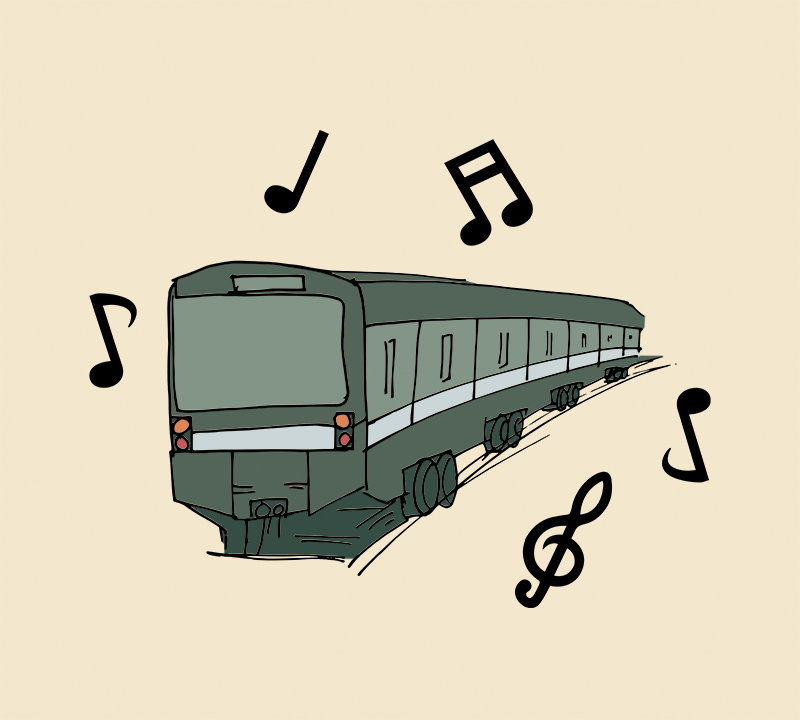The world is filled with subtle sound cues that largely go unnoticed
My first time riding the Montreal metro was like a sci-fi experience due to the glowing fluorescent lights and the sheer amount of people.
Growing up in Saudi Arabia, we didn’t have the infrastructure for public transportation—although the country is currently building a metro system in the capital city, Riyadh—so riding the metro was a very foreign concept to me. I was mostly entranced by the sounds the metro made—the simple three notes that played when the doors were about to close. So I decided to research that little chime.
That sound serves a dual purpose: to warn passengers to stay clear of the doors and to give a certain ambiance to the metro. This simple melody has a very interesting history. According to the magazine Spacing Montreal, the sound originated from a metro ad in the 70s called: “Il fait beau dans l’métro.” The ad opens with a heavily synthed version of the chime. The rest of the ad is a ridiculously charming musical about the metro, filmed at Atwater station.
This chime is unique to the type of metro train Montreal uses, the MR-73. According to Spacing Montreal, the chime was sampled from the engine noise the MR-73 makes. This specific train model has been around for a long time and, though it may sometimes feel and look antiquated, these trains helped create the charming sci-fi, three-note melody. Even the new train models, used on the orange line, use the same chime.
People hear this melody everyday, but most don’t give it a second thought. Repetitive sounds become part of our daily lives, almost fading into the background. Yet, these sounds always have an interesting backstory.
The 516th episode of the popular podcast This American Life featured an 81-year-old man named Dick, who has an obsession with on-hold music—music that plays when we’re waiting on the phone. It wasn’t just any on-hold music. It was a certain track he couldn’t name but always heard. So This American Life helped Dick track down the name of the tune and the story behind it. They eventually contacted the composers, Tim Carleton and Darrick Deel.
The friends collaborated on this track while in high school in 1989. The track is called “Opus No. 1,” and was recorded in Carleton’s garage. Years later, Deel started working for communication company Cisco, on their CallManager project—their enterprise phone line. He was given the opportunity to choose the default on-hold music for Cisco’s line of products. Eventually, this track became the default on-hold music for Cisco products all over the world.
Even though Dick had heard this track many times, and in the most annoying conditions—waiting on the phone for hours—he just loved this song. It would inspire him to spend hours looking for a song that was made in a teenager’s garage.
I have this vivid memory of watching a nature documentary on VHS as a child. I was alone in a dark room, watching a bunch of bugs on a leaf, when the music captured my imagination. It was some kind of ambient electronic music that had a particular educational-video sound. Every now and then, I look for that videotape in my parents’ house, just so I can re-experience the music that, in a lot of ways, shaped my musical taste.
Not even the most ardent music fans start their musical fascination with highly conceptual albums, but rather through very a memorable and simplistic melody they heard constantly. I remember thinking the pinnacle of music was the Grease soundtrack cassette my mother used to play before I went to bed. Eventually, my interests led me to listen to full albums and discover different artists, but my musical interests were initially sparked by a nature documentary and the Grease soundtrack.
We have an antiquated hierarchy of music. The world typically looks down on “primitive” music, like what’s used in commercials or the metro’s simple chime, and praises “high art” music, like John Coltrane’s intricate jazz albums. Yet, music comes, and is consumed, in many forms. It’s important to embrace all the different ways music affects us. Sometimes, the most inane and least artistic music sticks with us the longest.
Graphics by Zeze Le Lin
